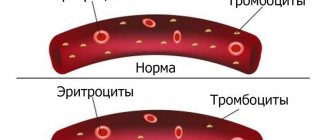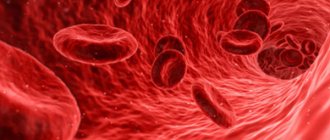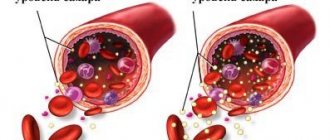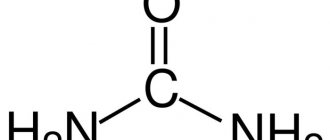When the composition of the blood changes, pathological conditions develop that require specific treatment. Patients often have a question about how to increase platelets in the blood. An increase in the number of these cells is facilitated by proper nutrition, taking medications, and using traditional methods. Treatment by any method can only be started with the permission of a doctor.
Diagnosis and symptoms
To understand whether it is necessary to increase platelets in the blood of a child or an adult, it is necessary to regularly conduct laboratory tests. The biomaterial is taken from a finger or vein. The method is chosen by the patient or the laboratory employee. When donating blood for analysis, observe the following rules:
- the laboratory is visited in the morning, you cannot eat food before that;
- on the eve of donating blood, eat easily digestible foods, avoiding overeating;
- exclude high physical activity;
- refuse to drink alcoholic beverages.
If a person has low platelets, the following symptoms bother him:
- constant nosebleeds;
- bleeding gums, detected when brushing teeth;
- inability to stop bleeding in minor injuries;
- the appearance of bloody inclusions in stool and urine;
- increased duration and volume of menstrual bleeding;
- the appearance of subcutaneous hemorrhages, which are red spots or small bruises.
The need for timely examination
In order to regularly monitor the child’s health, on the recommendation of a pediatrician, it is necessary to systematically conduct a general blood test. This will make it possible to track all the processes occurring in the body .
Determining platelet levels is an important part of this analysis.
Progress of the procedure
Blood for testing is taken from a vein or finger. In infants - from the vein on the leg, sometimes from the heel.
Although no preparation is required before the analysis, simple rules should still be followed:
- Before the procedure, do not eat, you can drink.
- For infants, blood is taken for analysis before feeding or 2-3 hours after it.
- Eliminate emotional and physical stress.
- Avoid hypothermia.
- Warn your doctor about taking any medications.
All of these factors can affect the results. To obtain the most reliable indicators, it is recommended to conduct blood tests 3 times at intervals of 2-3 days.
Blood sampling to determine platelet levels is carried out at a district clinic or specialized diagnostic center. Test results can be obtained within a few hours.
What foods increase platelets in the blood?
Compliance with a special diet plays an important role in the treatment of thrombocytopenia. Foods that increase platelets in the blood include:
- pumpkin seeds;
- potato;
- soy;
- spinach;
- beef liver;
- carrot;
- Brewer's yeast;
- red berries;
- buckwheat porridge;
- beet.
Liver
The product contains iron, so consuming it helps to quickly increase platelets. You can eat beef, pork or chicken liver. No less useful are the by-products of cod fish. The liver is used for boiling, steaming or baking. When choosing a product, pay attention to the way the animal is raised. Preference is given to meat from grain-fed cows, pigs and poultry. The use of low-quality feed contributes to the deposition of toxins in the animal’s liver that can harm the human body.
Buckwheat
Buckwheat porridge is useful for low levels of platelets, red blood cells and hemoglobin. Cereals contain large amounts of protein, iron and vitamins. Buckwheat is an environmentally friendly product for raising platelets. It increases hemoglobin, promotes the growth of muscle tissue, and cleanses the digestive system of toxins. Particular attention is paid to green buckwheat, which has the best taste. A diet for low platelets also involves eating other cereals - millet, rice, oatmeal.
Egg yolk
Previously, this product was excluded from the diet of patients suffering from atherosclerosis and other diseases of the cardiovascular system.
The product contains a large amount of cholesterol, but the connection between eating eggs and the deposition of plaques on the walls of blood vessels has not been established.
Studies have shown that the yolk contains substances necessary for the construction of blood cells and the production of hormones. In addition, the product contains albumin, an important component of blood plasma. Eggs must be included in the diet of patients with thrombocytopenia.
Important information: Consequences for the donor of platelet donation and how to donate
Dairy
Eating foods rich in calcium helps increase platelets. These include:
- milk;
- cottage cheese;
- low-fat cream;
- curdled milk;
- natural yoghurts;
- hard cheeses;
- sour cream.
By consuming dairy products, you need to prevent the leaching of calcium from the body. To do this, stop smoking, drinking alcohol and sweet carbonated drinks. Adult patients are recommended to choose dairy products with reduced lactose content. In adulthood, the ability to absorb milk sugar decreases. Drinking large amounts of milk can cause digestive disorders.
Kiwi
Eating 2 fruits per day helps to increase platelets in the blood quickly. The fruit has the following benefits:
- affordable price and good taste;
- high efficiency in restoring hemoglobin levels in anemia;
- positive effect on the immune system (provided by the high content of ascorbic acid and other substances necessary for the body);
- presence of B vitamins.
Pitahaya
Eating this Asian fruit helps to quickly increase the number of platelets and white blood cells in the blood. Pitahaya is the fruit of a plant related to cacti. It grows in Thailand, China, Indonesia and Vietnam. It is recommended to consume the fruit during rest. You can bring a small amount of fruit with you, but you need to eat them within 3 days. It is quite difficult to purchase Pitahaya in our country; in addition, the fruit has a high price.
Papaya leaves
The product contains a large amount of vitamins and microelements that help restore blood composition. The leaves are used to prepare a decoction, which is consumed 1 tbsp. l. in the morning and in the evening.
How to raise platelet levels in the blood with medications
Medicines for thrombocytopenia are prescribed by a hematologist. Self-use of drugs leads to the development of dangerous complications. If there is a marked decrease in the number of platelets, hormonal and hemostatic agents are prescribed. With mild thrombocytopenia, the restoration of blood composition is facilitated by taking vitamins.
Prednisolone
Hormonal drugs to increase platelets are often prescribed to patients with cancer. They stimulate the hematopoietic system, increasing the number of cells produced. Medicines are not recommended for use in children, pregnant and lactating women. Since glucocorticosteroids have a large number of side effects, they are used in short courses.
Etamzilat
This medicine does not affect the production of blood cells in the bone marrow. Hemostatics are used to eliminate bleeding and hemorrhages that occur against the background of thrombocytopenia. The drugs increase blood clotting, preventing the occurrence of dangerous complications. It is necessary to administer Etamzilat while constantly monitoring the functions of the hematopoietic system.
Codecor
The main advantage of this medicine is the presence of only natural ingredients. Sodecor contains plant extracts that have a positive effect on bone marrow function. This creates conditions for accelerated production of blood cells.
Vikasol
The drug belongs to the stimulants of blood coagulation factors. Like Etamsylate, it does not affect the number of cells. It is used as an adjunct in the treatment of bleeding caused by thrombocytopenia.
Derinat
The drug belongs to the stimulants of bone marrow functions, produced on the basis of nucleic acids of salmon fish. Derinat has a beneficial effect on blood clotting, preventing the development of hemorrhagic complications. The drug has virtually no contraindications or side effects, which allows it to be prescribed to children and elderly patients.
Important information: Norm of lymphocytes in the blood of men (table by age)
Thrombopoietin
The substance is a protein compound secreted by the bone marrow, kidneys, some muscle fibers and gonads.
Thrombopoietin is often compared to growth hormone.
The main function of the biologically active substance is the regulation of platelet maturation in the bone marrow of humans and some animals. When the level of the compound in the body decreases, the production of blood cells is impaired. Thrombopoietin stimulants are prescribed when there is an urgent need to increase the platelet count.
Treatment
To prescribe the correct treatment for elevated platelets, the doctor must know the causes of thrombocytosis. If this is a complication of the underlying disease, then by getting rid of it, you can bring the blood composition back to normal, the body itself will take care of it. If the cause of thrombocythemia is abnormalities in the formation of blood cells, the doctor will select medications that will slow down their production, then they will quickly return to normal.
At the same time, you will have to take care of blood thinning. Special medications are also prescribed for this. The doctor may advise changing the diet to include foods rich in vitamins, iodine, calcium, and iron.
The child should drink plenty of fluids. This can be green tea, compotes, and juices. The menu includes blood thinners: sea buckthorn, cranberries, viburnum, beets, lemons, garlic, tomato juice, etc. And it is better to exclude bananas, walnuts, pomegranates and other products that make the blood viscous. But it is not advisable to treat yourself with herbs, without a doctor’s recommendation.
How to raise platelets with vitamins
Vitamins C, B12 and K, as well as iron and folic acid, play an important role in the maturation of blood cells.
Vitamin B12
This substance can enter the body both with vitamin preparations and with food. This element is present in the following products:
- beef liver (this product should be consumed at least 3 times a week);
- fish and seafood (a fish day should be introduced into the diet, during which dishes are prepared only from seafood, in this case a person will never have a deficiency of vitamin B12);
- dairy products (a substance that helps to quickly increase the number of platelets is found in hard and brine cheeses, whole milk, yogurt, kefir and sour cream);
- cereal breakfasts (corn and multigrain flakes contain large amounts of vitamin B12, so they must be included in the diet).
Folic acid
Thrombocytopenia often develops due to a deficiency of folic acid in the body. The use of medications helps to compensate for the deficiency of the substance. Folic acid is also found in the following foods:
- lettuce leaves;
- beef and pork liver;
- apricots and peaches;
- asparagus;
- melons;
- egg yolk;
- cucumbers;
- zucchini;
- rye and wheat flour.
It is not recommended to heat treat vegetables and fruits. When cooking, some of the nutrients are lost. Folic acid, which helps quickly raise platelet levels, is found in beets. The juice of this vegetable is consumed in the morning on an empty stomach. To prepare the drink, small fresh beets are grated. The resulting mass is mixed with 20 g of sugar. In the morning the mixture is filtered. It is recommended to consume the juice within 2-3 months. After a short break, the course is repeated.
Iron
The substance is contained in such drugs as Fenyuls, Ferrumlek, Totema. Including the following foods in your diet helps replenish iron deficiency:
- meat (it is recommended to consume lean beef and pork, offal - kidneys, liver, tongue, heart);
- buckwheat grain;
- vegetables (pumpkin, new potatoes, green vegetables, onions, beets, tomatoes);
- greens (dill, parsley, spinach, some types of lettuce);
- legumes (peas, beans, peanuts);
- berries (strawberries, currants, blueberries or cranberries are consumed frozen);
- fruits (apples, persimmons, bananas, peaches, plums and pomegranates);
- hematogen, dark chocolate;
- freshly squeezed vegetable and fruit juices;
- seafood (salmon and sturgeon caviar, shrimp, squid).
- nuts and dried mushrooms.
Vitamin K
Vitamin K stimulates the bone marrow, helping to quickly raise platelet levels in men and women. The substance plays an important role in blood clotting processes. The use of vitamin K helps to avoid the occurrence of hemorrhagic complications due to thrombocytopenia. To increase the amount of this substance in the body, carrots, tomatoes, legumes, broccoli, and potatoes are included in the diet.
Important information: What is PLT in a general blood test (result interpretation and norm)
Mechanism of action
It may seem strange that such tiny blood cells play such a significant role in the functioning of the body. How does this happen?
The bottom line is this: platelets accumulate in large numbers where there is tissue damage, accompanied by blood loss. Here they connect and collapse, forming a protective sphere in the form of a blood clot, which stops the bleeding.
In addition to performing this function, blood platelets provide nutrition to the protective layer of blood vessels - the endothelium.
How to increase with folk remedies
The following folk remedies help increase the level of platelets in the blood at home:
- Lemon and honey. The product improves blood composition and strengthens the walls of blood vessels. The components are mixed in equal parts. To increase effectiveness, homemade medicine is supplemented with sesame or flaxseed oil. Use it in the morning, 1 tbsp. l.
- Oak bark. To prepare the infusion 1 tbsp. l. raw materials are poured with 1 cup of boiling water and left for 2 hours. The product is used to eliminate gingival and wound bleeding that occurs due to a decrease in the number of platelets.
- Pomegranate juice. Only a natural product quickly increases the level of platelet cells. Drink the juice, first diluting it with water in a ratio of 2:1. If you have stomach diseases, you should not consume the product on an empty stomach.
Nettle
Nettle is a natural stimulator of platelet production. The following recipes are used at home:
- Nettle drink. To prepare, you will need 5 ml of plant juice and 50 ml of milk. The components are thoroughly mixed. The product is used 3 times a day for a month. In case of lactase deficiency, milk is replaced with boiled water.
- Nettle decoction. Boil 10 g of dry leaves in a glass of water for 5 minutes. After removing from heat, leave the product for 2 hours. The finished decoction is consumed in 125 ml in the morning, lunch and evening. The course of treatment lasts 3 weeks, if necessary it is repeated after a month's break.
Verbena infusion
Verbena officinalis contains substances that have a beneficial effect on bone marrow function. An infusion of this plant can be used to treat thrombocytopenia of any origin. To prepare the drink you will need 20 g of dry herb and 0.5 liters of water. Verbena is brewed and left for 3 hours. The finished liquid is filtered and consumed 50 ml per day. The infusion can be stored in the refrigerator for a week. The drug is suitable for long-term treatment; it is taken until the blood composition normalizes.
Sesame oil
The natural remedy helps to quickly increase platelet count. It contains all the substances necessary for the normal functioning of the hematopoietic system. Take 1 tbsp of oil. l. half an hour before meals. The duration of the course depends on the amount of product used. It is recommended to drink at least 2 liters of sesame oil. There is no need to take any vitamin preparations during the treatment period.
Alarm Signals
Particular concern should be given to:
- the appearance of bruises in the child;
- blood from the nose;
- bleeding gums.
The baby’s complaints of headache, lack of appetite, and drowsiness should not be ignored.
Primary thrombosis is accompanied by an enlarged spleen, the formation of blood clots in the vessels, and bleeding in the digestive organs.
In this case it is observed:
- severe itching;
- painful sensations in the fingers and toes;
- high pulse;
- blood pressure surges;
- coldness in the extremities.
Such symptoms should not be ignored and require mandatory consultation with a doctor in order to identify the cause of this condition.
Indications for examination
The need for regular blood examinations arises if the following pathologies are observed:
- anemia caused by a lack of iron in the child’s body;
- viral and bacterial infections;
- autoimmune diseases;
- oncological blood pathologies;
- diseases of the spleen.
In the presence of such pathologies, examination should be carried out strictly according to the doctor’s recommendation. In other cases, for preventive purposes - once a year. Timely detection of deviations from the norm will be a prerequisite for preventing serious consequences .











